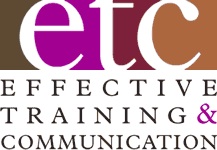Management-staff one-on-one meetings should be a regular component of any organization’s performance management system. They allow for maintaining professional relationships and providing constructive ‘Plus/Delta’ feedback.
‘Pluses’ are an employee’s specific tasks, accomplishments or behaviors that are working, adding value that should be continued or even expanded. ‘Deltas’ are not negatives but specific changes in activity or methods that will improve results. Usually the change is doing less of something that isn’t working or stopping it completely or doing more of something that would work better.
These meeting should be short, concise, frequent and constructive and fall into three categories:
- Comprehensive – reviewing performance over the last week or month.
- Project Specific – dealing with the ‘Pluses’ and ‘Deltas’ of a specific project or process.
- Issue Specific – focusing on a specific problem that needs to be resolved immediately.
They should have a detailed agenda distributed prior to the meeting and followed up with a concise summary of points discussed, actions items and next steps.
This strategy should be organization-wide at all levels and managers should be evaluated for the quality of the meetings they run with their subordinates.
For maximum success, mangers should avoid these ineffective behaviors:
- Talking way too much and not listening enough to employees.
- Telling too much and not asking enough questions or listening to responses.
- Assuming they know more about the problem than the employee closest too it. So, they come up with the solution because they’re the boss.
- Not having meetings often enough so they resort to rambling one-way data-dumps on a long list of topics instead of a focused conversation on a specific time period, project or problem.
- Criticizing ideas from staff during initial brainstorming conversations rather than generating lots of ideas in a non-judgmental process.
The negative effects of such lame one-on-ones include failing to accomplish the initial objectives, wasting time and demotivating employees.
Here’s an example of when Joe the supervisor met with Maria, the production analyst, about problems with a new manufacturing process. He should have lead a dynamic and creative dialogue to explore possible causes, analyze each different solution and choose the best one. But instead, he shared his thoughts first, barely listened to Maria’s comments, told her how to solve the problem and then blamed her when it didn’t work. Maria got angry, quit and took a different job where her new boss wasn’t such an idiot. Score – Joe zero, Maria – won.
So, if you manage people, embrace the value of effective one-on-one conversations with each person. Strive for effective, efficient and engaging dialogues … and avoid being anything like Joe.

